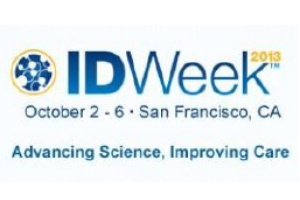Latest approach to TB treatment looks at novel drug regimens
The new paradigm in TB treatment focuses on using existing drugs and evaluating them in combination to develop better, shorter regimens.
With the pipeline for new tuberculosis drugs “perilously under populated,” the new paradigm in tuberculosis treatment focuses on using existing drugs and evaluating them in combination to develop better, shorter regimens, according to leading physician scientists at last week’s IDWeek meeting in San Francisco. Researchers are now looking at individual drug compounds and putting them together in novel ways to treat the disease that claims more than a million lives every year.
Dr. Richard Chaisson of the Center for TB Research at Johns Hopkins University said shorter TB regimens may be around the corner, with several clinical trials using existing drugs currently underway. That’s welcome news, considering that the standard therapy for drug-sensitive TB lasts six to nine months, and can last up to two years for drug-resistant TB.
Dr. Timothy Sterling of Vanderbilt University said that we’ll shortly see results from two trials looking at the use of fluoroquinolone drugs in TB regimens: Phase III clinical trials are currently underway in the TB Alliance’s REMox TB study, which tests whether a moxifloxacin-containing treatment regimen of just four months can cure drug-sensitive TB patients as effectively as the standard six-month regimen. The results of REMox TB are due early next year. Results from the OFLOTUB study, which also looks at the use of fluoroquinolones in a 4-month vs. 6-month regime, are due next month.
Results from an observational study of a shortened multi-drug resistant TB regimen are encouraging and bear watching, said Sterling. MDR-TB patients who took part in the Bangladesh regimen study were reported to have high, relapse-free cure rates thanks to a nine-month regimen. The Bangladesh regimen has been incorporated in the STREAM study, sponsored by the International Union Against Tuberculosis and Lung Disease, which is currently testing a nine-month treatment regimen in over 400 patients in four countries.
A key drug that has proven effective in the Bangladesh trial – clofazimine – is also shown to be effective in other models, and could allow for treatment shortening, Sterling said.
Tuberculosis sessions were abuzz with news about bedaquiline, but also about another potential new drug in MDR-TB treatment – delamanid, developed by Otsuka. Chaisson explained that a phase II study of delamanid showed a significantly higher rate of MDR-TB culture conversion in sputum samples from 481 patients after two months of use, compared to a placebo. There also appeared to be no drug interactions with antiretroviral drugs. The European Medicines Agency, however, rejected expedited approval in July because of a lack of data. They determined that 2 months of treatment was too short to demonstrate delamanid’s effectiveness. Delamanid is currently in phase III trials.
Another potentially new MDR-TB drug – PA-824 – has shown promising results in a couple studies, one which showed that small doses of the drug are the most effective. A phase IIb study of the drug is currently underway, sponsored by the TB Alliance.
Source: Science Speaks


